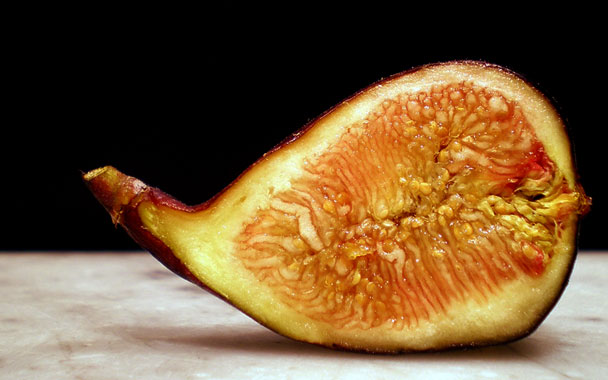I must have been about eight years old when I produced my first culinary masterpiece. On a humid summer night all those years ago, armed with nothing more than a skewer and an uncharacteristic patience for a child, I learned to perfect the toasted marshmallow, slowly turning the confection over the waning coals from that evening’s grilled feast. The reward of the crisp, not-yet-charred exterior and melted, gooey interior was well worth the effort. It was at that grill that I first understood the true cause and effect of cooking.
I continue to make desserts on the grill whenever I have the chance, and I don’t know why more people don’t do it. Grilled treats require little prep time and minimal cleanup; and most importantly when you’re cooking on a hot day, there’s no oven to preheat. The best fruits of the season are now at their peak of flavor, and the stone fruits are a no-brainer: peaches, apricots, nectarines. Tropical fruits, like mango and pineapple, are great vehicles for a bit of sweet and smoky char. I’ve also found a quick but elegant way to create a dessert using perhaps my favorite summer fruit of all, the fig. (More on that later.)
Grilling fruits is certainly not a new idea, but it takes a little imagination to bring out the best that they have to offer. First, I like to approach fruit just as I would meat or fish: I use dry rubs and marinades, fresh herbs, spices, liqueurs, and even flavorful olive or nut oils to elevate the flavors of the fruit. I love pairing stone fruits with herbs like tarragon, thyme, and lavender, with perhaps a grind of fruity pink or conventional black pepper. To create a complex platform for pineapple, I might marinate long sections of the peeled and cored fruit in rum, ginger, star anise, and brown sugar, sometimes even the day before, to allow all of those aromas to mingle.
Simple preparations don’t need much in the way of adornment—a satisfying scoop of vanilla ice cream or the crunch of a homemade streusel or granola is all it takes. But imagine those fragrant grilled peaches whirled up in the blender to create a smooth, sweet version of gazpacho, or that golden, caramelized pineapple as a filling for crêpes, perhaps topped with a cool coconut sorbet. Croustades, or simple tarts, offer limitless possibilities. Another option for grilled fruits borrows a page from the savory side of the kitchen, using the en papillote technique. A variety of fruits, plus flavorings such as vanilla bean, lemongrass, or cinnamon sticks (to name just a few), are sealed in a foil pouch, which not only preserves the aromas, but also captures the wonderful, sugary juices that are created when the fruits are heated. Since the pouches are prepped in advance, this method works especially well for entertaining; papillotes can be thrown onto the grill while your guests are enjoying the main event.
A couple of my go-to grilled desserts take a little more attention or advance preparation, but they’re well worth it. I like to halve plump, ripe figs and arrange them on wooden skewers (tip: soaking the skewers in water beforehand will prevent them from scorching). After a drizzle of extra virgin olive oil, it’s onto the fire, where they’ll sit for just a few minutes so that their natural sugars develop. Once they’re off the grill, I like to serve them immediately, with crushed hazelnuts, honey, and perhaps even a spoonful of creamy mascarpone. And one of my favorite at-home desserts is a sweet take on the croque monsieur. It consists of nothing more than an easy dark chocolate ganache (Nutella is a great substitute) and sliced bananas, tucked between slices of buttered brioche; I also like to add a few grains of coarse sea salt to highlight the chocolate. Assembled in advance, these warm and crispy bites are ready to munch in mere minutes.
Just a few important words of advice: It’s important to start with a well-cleaned and oiled grill, especially after cooking burgers or a whole fish. Using oils or liqueurs can cause flare-ups, which shouldn’t harm the fruit, but be careful of those fingers and eyebrows. And as you would with any other produce, skip over hard or unripe specimens for grilling; no amount of heat or sugar will ever bring them to life. Finally, due to their own sugar content, in addition to any added sweetening, fruits can quite easily turn from pleasantly caramelized to irretrievably burnt, so keep an eye on them.




 Pinterest
Pinterest


